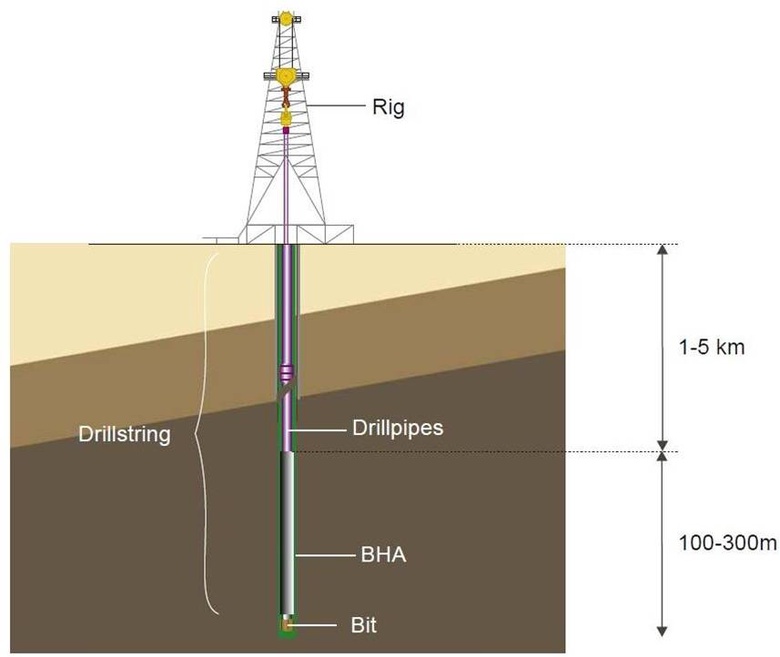
Our research is focused on developing lower dimensional models for BHA vibrations with experimental validation where possible. In our initial studies, an axial-torsional vibration (2 degree-of-freedom) model recently proposed in literature was adopted and modified.
In this model, the coupling between axial and torsional vibrations arise from the cutting and contact forces at the bit, and the model involves state-dependent delay differential equations. A detailed stability analysis of this model and the development of a Galerkin projection scheme to tackle the state dependent delay system, are the key contributions of this study. This model was subsequently coupled to a lateral vibration model (considering the near-bit stabilized section). The combined axial-torsional-lateral model was solved for varying rotary speeds, weight on bit, and collar lengths etc. The spring-mass models studied earlier, though insightful, are of limited practical use.
With a view to developing realistic reduced order models from higher dimensional models, an in-house static Finite Element code for studying BHA in straight, inclined holes in the presence of borehole constraint, was developed and validated against commercial FE code predictions. In an ongoing work, the utility of Proper Orthogonal Modes (POMs) in reduced order modelling of BHA is explored. The necessary higher dimensional data are generated through Finite Element simulations and will be utilized in the constructions of the POMs. An in-house experimental rig to facilitate the study of the BHA and drill-string dynamics is also currently under construction.
